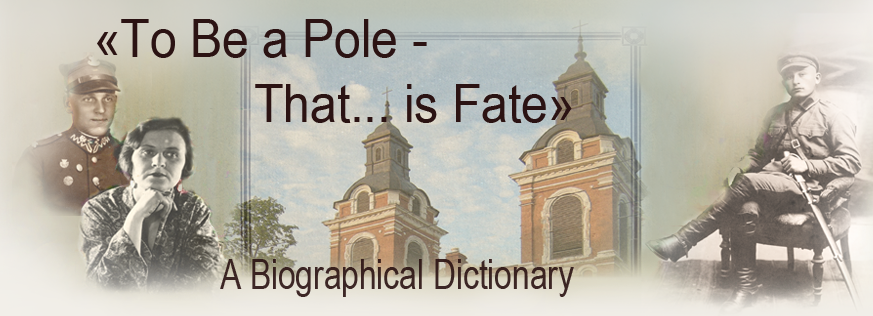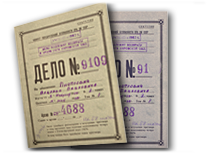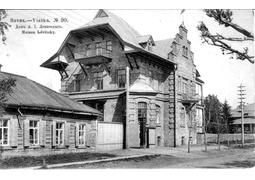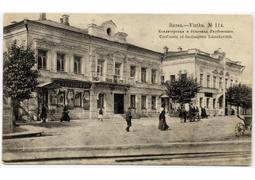Introduction
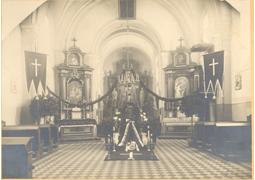 The Viatka region has long had ties with Poland. As early as the beginning of the nineteenth century more than a few Poles came to the region. Then with the division of Poland at the end of the eighteenth century, a significant number of Poles became inhabitants of the Russian Empire. Poles came to the Viatka region in various ways: some were exiled to Russia’s remoter corners while others came in search of employment. At that time Viatka did not have enough educated people and those who agreed to serve in Viatka’s various institutions received exceptional rank and travel and start-up expenses. Such was the case with the Tsiolkovskii family and its little Kostya, Konstantin Eduardovich Tsiolkovskii, the future founder of astronautics, and Viatka’s well-known doctor, Anton Levitskii, the horticulturalist, Anton Rydobel’skii, the attorney, Ermingel’d Sventorzhetskii, and many others whose life and activity in so many ways defined Viatka’s social life in the nineteenth and beginning of the twentieth century. The Polish artist of Italian extraction, El’viro Andriolli, the novelist, Aleksandr Stepanovich Grin (Grinevskii), and the doctor, Stanislav Adol’fovich Dravert, the parents of the latter forced to come to Viatka, all left their mark on Viatka.
The Viatka region has long had ties with Poland. As early as the beginning of the nineteenth century more than a few Poles came to the region. Then with the division of Poland at the end of the eighteenth century, a significant number of Poles became inhabitants of the Russian Empire. Poles came to the Viatka region in various ways: some were exiled to Russia’s remoter corners while others came in search of employment. At that time Viatka did not have enough educated people and those who agreed to serve in Viatka’s various institutions received exceptional rank and travel and start-up expenses. Such was the case with the Tsiolkovskii family and its little Kostya, Konstantin Eduardovich Tsiolkovskii, the future founder of astronautics, and Viatka’s well-known doctor, Anton Levitskii, the horticulturalist, Anton Rydobel’skii, the attorney, Ermingel’d Sventorzhetskii, and many others whose life and activity in so many ways defined Viatka’s social life in the nineteenth and beginning of the twentieth century. The Polish artist of Italian extraction, El’viro Andriolli, the novelist, Aleksandr Stepanovich Grin (Grinevskii), and the doctor, Stanislav Adol’fovich Dravert, the parents of the latter forced to come to Viatka, all left their mark on Viatka.
In 1903 a Catholic church built by funds collected from local Poles was consecrated. It became the spiritual and cultural center of Viatka’s Polish community.
Thousands of Poles came to Russia at the beginning of the twentieth century during the period of the Stolypin reforms. They founded settlements along the Kotlas railroad in the Vologda province (now the Oparino district of the Kirov region). A large number of Polish refugees arrived in our region during the First World War.
After the declaration of Poland’s independence at the end of the Soviet-Polish war, many Poles left for their homeland.
But the Polish diaspora continued in Viatka to include Poles and Polish citizens in search of work; political emigrants exiled as dissidents; and during World War II Poles who resettled from Western Ukraine and Belarus and who came as well as evacuees and refugees. During the war a Polish Interests Section (Delgatura pol’ska) and a division of the Union of Polish Patriots were active here. Viatka’s committees for military registration and enlistment sent many soldiers to Anders’ army and the Polish Armed Forces.
In the 1980s Viatka-Polish relations experienced a significant revival. The governments of the Kirov and Siedlce regions signed a friendship accord in 1989 that called for economic, scientific, and cultural cooperation. An active exchange of delegations and performing artists followed as did the creation of a Society of Soviet-Polish Friendship.
Despite changes in the political life of both countries, cooperation has continued. A Polish Club and a regional division of the Russian-Polish Society remain active in Kirov. Viatka’s State University for the Humanities, a number of schools, and special courses provide opportunities for the study of the Polish language. The journal, Znad Viatki (From Viatka) appears regularly. The cities of Kirov and Siedlce exchange official delegations.
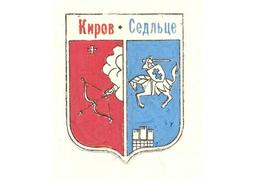 Over the years Kirov’s historians have taken up the topic “Poles in Viatka.” Recently such books have appeared as those by T. Dvoretskii, Participants of the Polish Revolt of 1863-1864 in Viatka Exile (Kirov, 2002); by L. Podlevskikh, Political Exiles Imprisoned in Viatka (Kirov, 2005); and V. Zharavin and E. Chudninovskikh, Joined by a Common Fate … (Kirov, 2006).
Over the years Kirov’s historians have taken up the topic “Poles in Viatka.” Recently such books have appeared as those by T. Dvoretskii, Participants of the Polish Revolt of 1863-1864 in Viatka Exile (Kirov, 2002); by L. Podlevskikh, Political Exiles Imprisoned in Viatka (Kirov, 2005); and V. Zharavin and E. Chudninovskikh, Joined by a Common Fate … (Kirov, 2006).
Continuing work on this topic, we offer readers the present biographical dictionary of Poles and Polish citizens who were repressed in Stalin’s time in areas now encompassed by the Kirov region. It features documents from the State Archive for the Social and Political History of the Kirov Region. The Archive received biographies of Poles who suffered for having lived in Poland and for contact with Polish relatives and acquaintances and more.
All individuals whose biographies are in this book have been fully rehabilitated.
The Dictionary contains the biographies of 291 people. Entry length varies depending on the availability of documentary evidence. Along with archival materials, this book’s authors have used reminiscences of relatives and acquaintances of the repressed. Surnames, given names, and patronymics are reproduced here as they appeared in the documents. It is important, therefore, to note that these names are frequently russified and do not correspond to the original. For example, the Polish name “Jan” is rendered almost everywhere as “Ivan,” “Michał” as “Mikhail,” “Helena” as “Elena,” and so forth.
and from the State Archive for the Social and Political History of the Kirov Region
